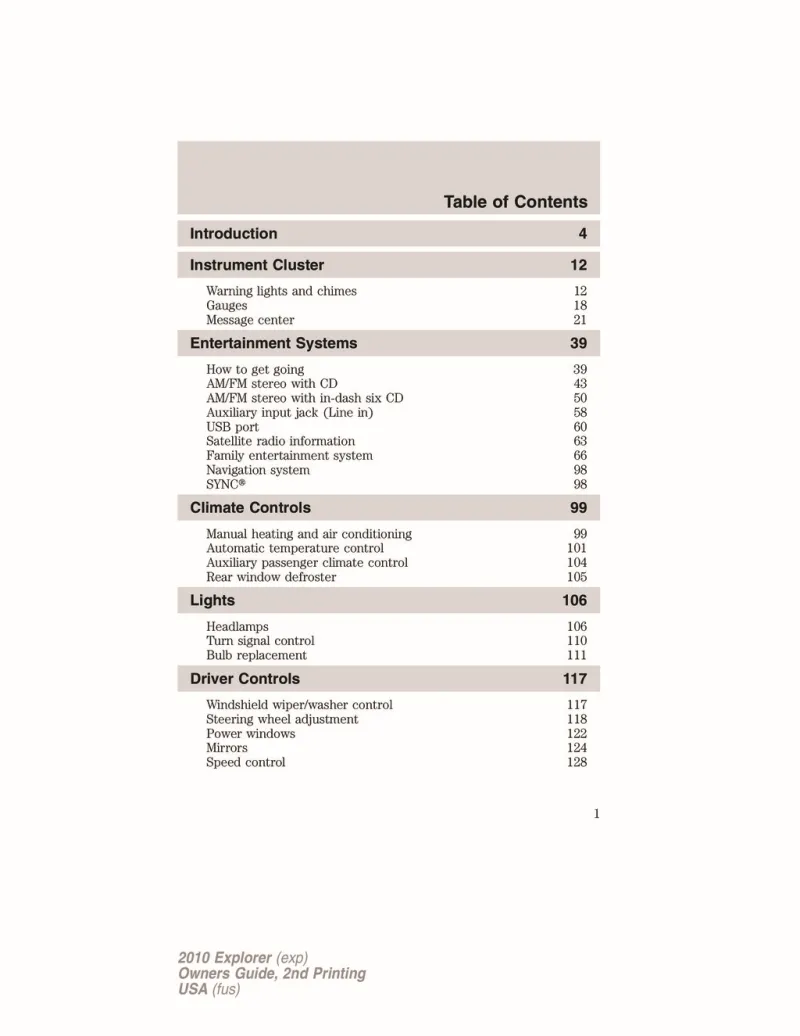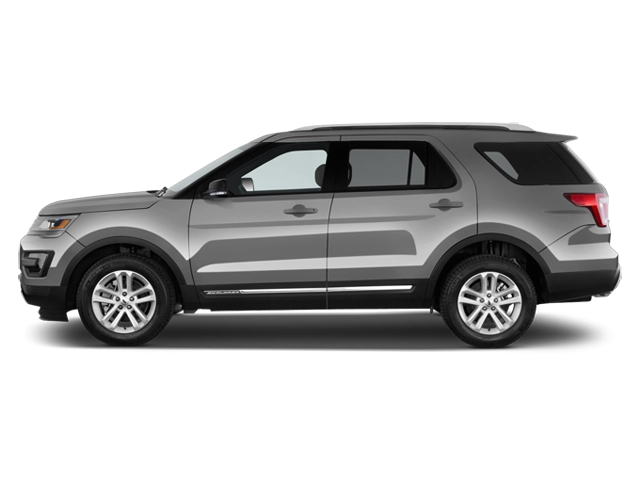2010 Ford Explorer Owner's Manual

Table of Contents
2010 Ford Explorer Overview
Introduction
The 2010 Ford Explorer stands as a testament to durability and versatility in the world of midsize SUVs. Renowned for its off-road capabilities and comfortable ride, the Explorer remains a popular choice for families and adventure seekers alike. With a blend of power, space, and safety features, this vehicle exemplifies Ford's commitment to quality and innovation.
Powertrains
The 2010 Explorer offers drivers a variety of powertrain options, making it adaptable to different driving needs. The standard engine is a robust 4.0-liter V6, producing 210 horsepower and 254 lb-ft of torque, providing ample power for everyday driving and towing. For those craving a bit more performance, the optional 4.6-liter V8 engine boosts the output to 292 horsepower, delivering a thrilling experience on both highways and rugged terrains. Both engines are paired with a five-speed automatic transmission, ensuring smooth shifts and reliable performance.
Trims
This model year features several trims including the XLS, XLT, Eddie Bauer, and Limited, allowing for a tailored experience. The XLS serves as the base trim, offering essential features. The XLT adds a touch of luxury with enhanced interior appointments, while the Eddie Bauer trim brings a premium feel with stylish design details. For the ultimate in comfort and convenience, the Limited trim includes advanced features such as leather seating, top-notch audio systems, and various technological upgrades.
Features
The 2010 Ford Explorer is equipped with a host of features aimed at ensuring an enjoyable ride. Standard features include keyless entry, a robust sound system, and air conditioning, while higher trims offer leather upholstery, heated seats, and a navigation system. Safety is paramount; hence, the Explorer comes with essential safety features such as airbags, stability control, and anti-lock brakes, providing peace of mind for all passengers.
Owner's Manual
The owner's manual for the 2010 Ford Explorer is an invaluable resource, containing vital information on maintenance schedules, warranty details, and operational guidelines. It provides comprehensive instructions for utilizing various features, ensuring that owners can maximize their vehicle’s performance and longevity while adhering to safety protocols.
User manual download
The Ford Explorer owner manual for the 2010 model year is to be found in PDF downloadable format on this page. The owner manual for the model year 2010 is free and in English, but the repair manuals are usually not easy to get and may cost more.
Manual Questions
Fill the form below and someone will help you!

